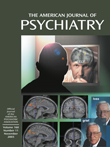Sándor Ferenczi, M.D., 1873–1933
Sándor Ferenczi was a pioneer in the development of the widening scope of psychoanalytic technique. Born in 1873 in Miskolc, Hungary, Ferenczi met Freud in 1908, thus beginning an intimate and often stormy 25-year relationship (1, 2) as Freud’s disciple, analysand, and colleague that ended with Ferenczi’s death of pernicious anemia in 1933. Sensitive to issues of power, abuse, and trauma, Ferenczi emphasized the therapeutic importance of a holding environment, tenderness, nurturance, and a corrective emotional experience. Always controversial, Ferenczi has been referred to as the “mother of psychoanalysis” and the “lovable analyst” but also as the “enfant terrible” of analysis.
In the early 1920s, Ferenczi was best known for his “active technique,” which consisted of demands, prohibitions, and the setting of a termination date. Of importance is that he later recognized that aspects of this technique inadvertently re-created his patients’ childhood traumata. In 1924, he coauthored with Otto Rank The Development of Psychoanalysis, which gave priority to experience (Erlebnis) over Freud’s emphasis on insight (Einsicht). His last paper, initially suppressed by Ernest Jones, “Confusion of Tongues Between Adults and the Child” (3), ironically has become one of his most popular contributions.
Ferenczi’s legacy rests on his early descriptions of important clinical phenomena, including “identification with the aggressor” (anticipating Anna Freud), the “holding environment” (anticipating Donald W. Winnicott), the “corrective emotional experience” (anticipating Franz Alexander), and fragmented self-states (anticipating Heinz Kohut). The seeds of contemporary interest in a two-person psychology, object relations theory, and intersubjectivity can readily be traced to Ferenczi’s work. In spite of his intense disagreements with Freud in the early 1930s, Ferenczi remained a dissident, not a defector. Indeed, in his obituary, Freud appreciatively acknowledged that Ferenczi had “made all analysts his pupils.”
Address reprint requests to Dr. Hoffer, 14 Welland Rd., Brookline, MA 02445; [email protected] (e-mail). Photo by Edward Bibring. Image courtesy of the Archives of the Boston Psychoanalytic Society/Institute.

Sándor Ferenczi
1. Falzeder E, Brabant e (eds): The Correspondence of Sigmund Freud and Sándor Ferenczi: vol 2, 1914–1919. Introduction by Hoffer A, translated by Hoffer PT. Cambridge, Mass, Harvard University Press, 1996Google Scholar
2. Dupont J (ed): The Clinical Diary of Sándor Ferenczi. Translated by Balint M, Jackson NZ. Cambridge, Mass, Belknap Press (Harvard University Press), 1988Google Scholar
3. Ferenczi S: Confusion of tongues between adults and the child (English translation). Int J Psychoanal 1949; 30:225Google Scholar



